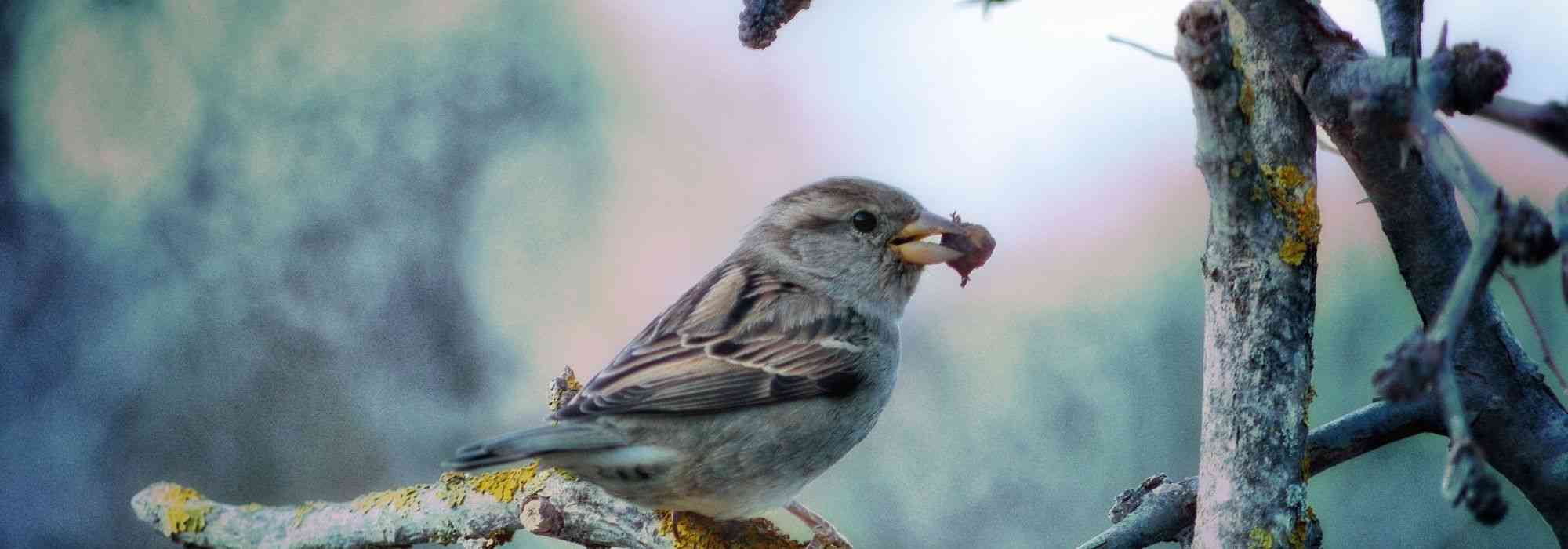
What do the birds in our gardens eat?
10 tips and tricks to help birds feed themselves
Contents
Our gardens are a true larder appreciated by birds. They find both a refugium and food there. Seeds, fruits, berries, and insects—here’s a short list of everything birds can find to eat to rejuvenate in your garden. Useful to know if you want to give them a helping hand! Discover our tips to help them feed.
What is the diet of birds?
- Some species of birds prefer seeds, others prefer fruits and berries, some eat insects and worms, others are omnivorous and enjoy all of these at once, and some change their diet throughout the year;
- In spring and summer, birds favour insects, caterpillars, and worms. Richer in protein than seeds, they use them to feed their young;
- In winter and early spring, birds need a helping hand to find food and survive the cold. This is the time to provide them with seeds and fat balls;
- Among the songbirds most commonly found in gardens, great tits love sunflower seeds and enjoy fat balls, berries, fruits, and insects or caterpillars. A great tit eats the equivalent of its weight in food each day;
- Blackbirds often feed on the ground, eating insects, worms, caterpillars, slugs, and snails. They also enjoy fruits, such as olives, apples, pears, and berries;
- The European greenfinch likes seeds, especially sunflower seeds, but also small berries and small apples;
- The robin feeds on worms and insects but also on seeds and berries;
- The sparrow enjoys fat balls with seeds, just like the jay, but also insects and worms.
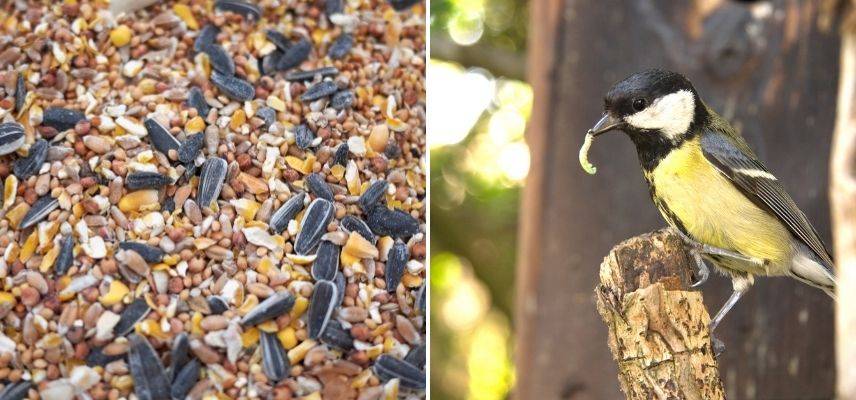 Seed mix and great tit with a larva in its beak
Seed mix and great tit with a larva in its beak
Read also
Hedge for birds: which shrubs to choose?Provide them with seeds
- Sunflower seeds are a real treat for tits and greenfinches. They are rich in lipids and help them get through winter. You can also plant sunflowers, which, at ripeness, provide natural bird feeders;
- Lipid-rich peanuts are also favoured by tits and jays;
- Almonds, walnuts, and crushed hazelnuts are a valuable food source for birds;
- You can also offer them seed mixes for garden seed-eating birds, which contain sunflower seeds, millet, wheat, corn, and oats;
- Place the seeds in a sealed feeder. Check that the seeds are not damp or rotten, and if necessary, change the seeds and clean the feeders;
- Put out small quantities of seeds and do this regularly at the same time;
- Prefer organic seeds if possible;
- Provide natural seeds, without additives or salt.
Offer them fruits and berries
- You can give birds quarters of ripe apples or pears;
- You can also plant bushes that produce fruit such as olive trees, apple trees, cherry trees, blackthorn, but also berries, which birds are very fond of. You can try the rowan, the guelder rose, the milky cotoneaster, the rose that produces hips, ivy, hawthorn, elder, and holly. Birds love thorny bushes that produce berries: they protect them from predators and provide them with food.
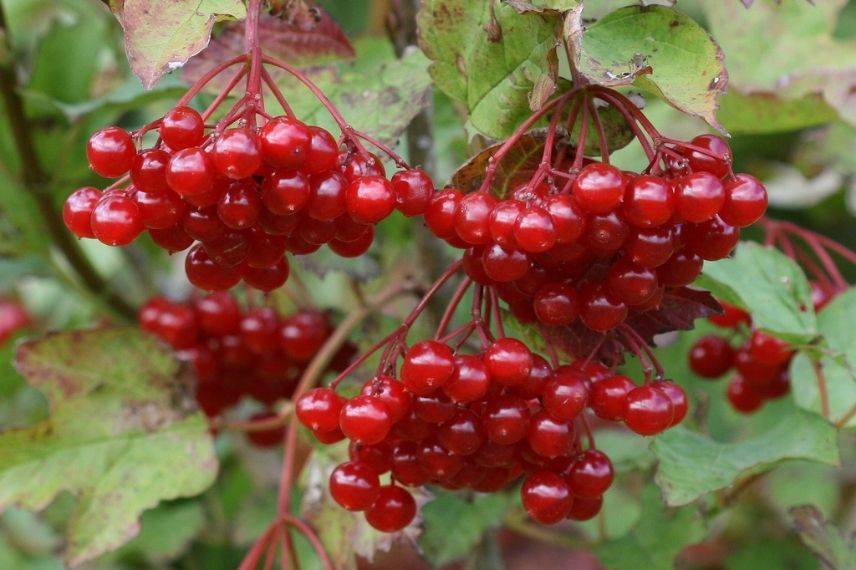
Berries of Guelder rose: Viburnum opulus (photo s. rae)
Encouraging insects and worms
- Plant bushes and flowers that attract insects, such as blackthorn, hawthorn which also has the advantage of being thorny, and all melliferous plants;
- For birds that enjoy larvae, the best option is to favour a natural and ecological garden, where they will find everything they need, particularly an accessible compost corner as it will be teeming with worms.
Place fat balls for winter
- Choose quality fat balls and remove the filament to avoid any accidents;
- Place the fat balls in suitable feeders.
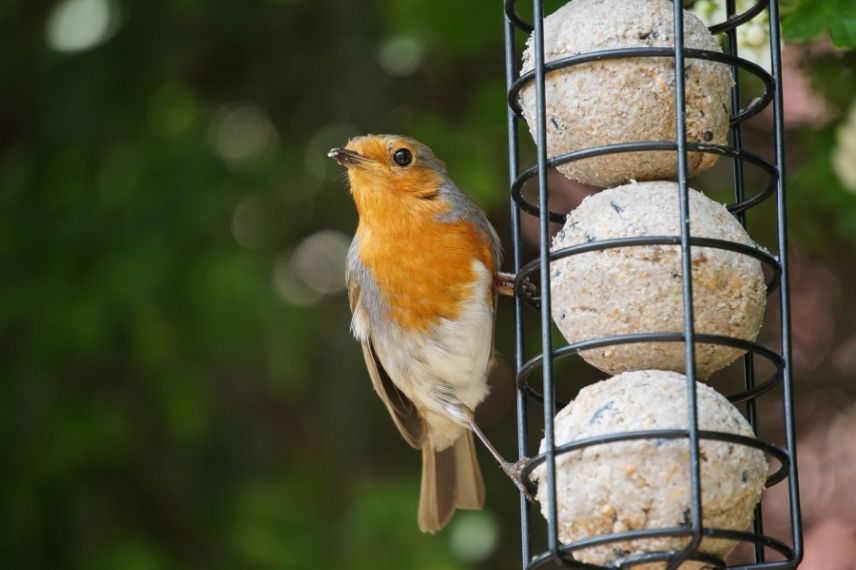
Install a bird feeder
- Place the feeder high up in a quiet spot where birds can easily escape if a predator appears;
- Hang the feeder in a slightly thorny hedge to deter predators.
Feeding birds between winter and spring
- In winter, it is cold and freezing (from October to November depending on the climate) and birds need a helping hand to feed;
- Do not suddenly stop feeding them in winter;
- Feed them until early spring (in March and April) as, during this time, plants have not yet started growing again, birds are in full nesting mode and have significant energy needs to feed and care for their young.
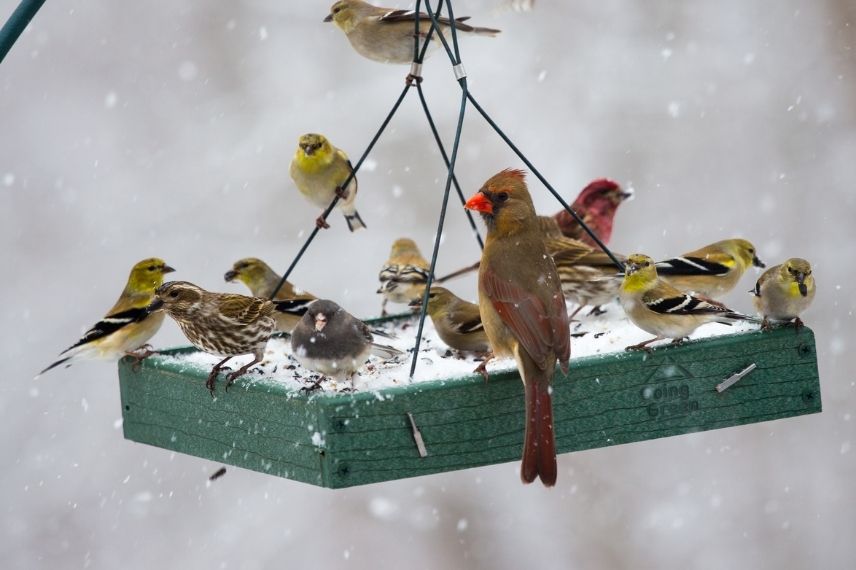
What not to do?
- Do not give bread, rice, or cakes that can swell their stomachs and put them in danger;
- Do not add salt or additives.
Give them water!
- Provide water in a shallow dish to prevent birds from drowning;
- Place a mesh over the pond or fountain or water storage to allow access without drowning;
- Change the water daily to prevent diseases;
- Offer water without additives or salt;
- Do not give milk.
Prioritise a natural and ecological garden
Install small hedges with fruiting bushes, preferably thorny ones, for natural protection. This way, your garden will become a little slice of paradise where birds will love to live, fly, and take refuge!
Read Virginie’s tips for feeding birds in winter and the bushes where birds find refuge.
Finally, to learn how to identify birds, feel free to get the ornithology guide by Delachaux and Niestlé. You can also participate in the counting operations of the French LPO observatory (League for the Protection of Birds) from January to May.
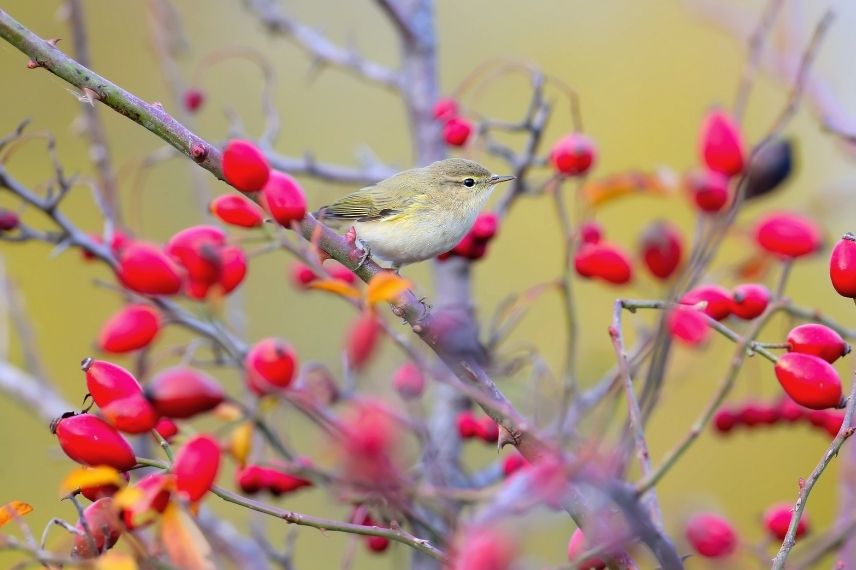
Willow Warbler
- Subscribe!
- Contents
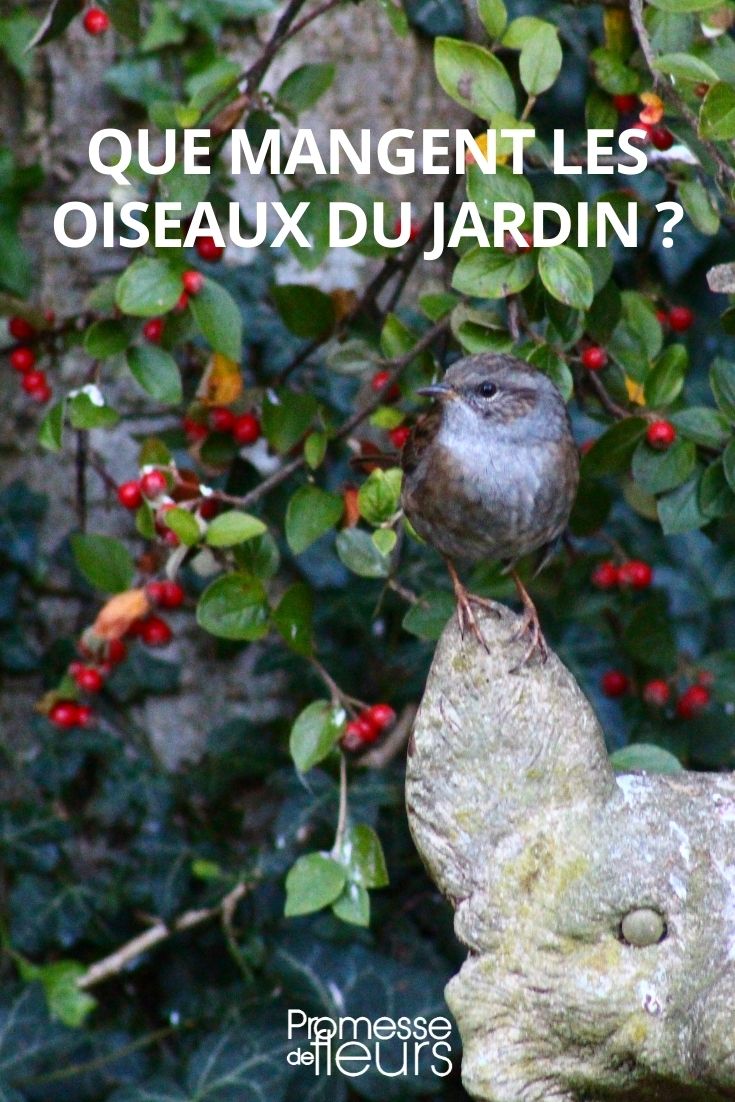































Comments